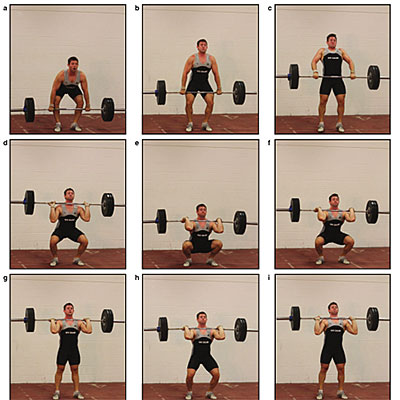Here is an interesting read if you like science & weightlifting (which I hope is everyone of you).
 Adam Storey and Heather K. Smith published a paper for Sports Medicine taking a look at the Unique Aspects of Competitive Weightlifting.
Adam Storey and Heather K. Smith published a paper for Sports Medicine taking a look at the Unique Aspects of Competitive Weightlifting.
It is a very nice review of the research that has been done so far and features lots of interesting numbers and analysis.
The paper is still copyrighted, but thanks to Adam all ATG readers can get it here for free.
He was kind enough to ask the Journal for permission to post it here and surprisingly enough they agreed to it!
Download: available on Google Docs (File – ‘Make a Copy’ or ‘Download as’)
Here are some excerpts.
After a brief description of the lifts they take a look at the different approaches to structuring training around.
From 4.2 Annual Training Structure
Soviet System: Although international-level weightlifters would typically perform 20000–25000 multijoint exercise repetitions per year, only 15–35% of those repetitions were competition lifts performed at 80–90% of their one-repetition maximum (1RM) with an additional 4–7% being per- formed at > 90% of 1RM.
Bulgarian System :Bulgarian lifters performed between 1400 and 4000 maximal attempts, and 450 and 460 failed supramaximal attempts each year in training. Approximately 10% of the total training time is devoted to warm-up exercises, 45% to competition lifts, 40% to complementary strength exercises, 3% to supplementary exercises and 2% to other sports and cross-training activities. […]
From 4.4 Metabolic Cost of Weightlifting and Nutritional Practices
Weightlifters have been shown to over consume protein and fat at the expense of adequate carbohydrate.
From 4.5 Influence of Body Weight Changes on Performance
Where mild hypohydration (loss of a large volume of body fluid) (i.e. <2% reduction in body mass) techniques have attenuated neuromuscular performance, rapid rehydration interventions over a short period of time (i.e.over a 2hour period as done in competition) have effectively restored performance variables. However, an athlete’s ability to overcome the detrimental effects of dehydration is severely affected when hypohydration-induced reductions in body mass reach 3–4%.
From the Endocrine section 6.4.1 Testosterone
Elite junior weightlifters with > 2 years training experience exhibit significantly greater exercise-induced increases in serum testosterone when compared with those with <2 years training experience. Combined, these results demonstrate that weightlifting training elicits a response similar to that reported for conventional strength and hypertrophy protocols involving large muscle
mass exercises.
But
it appears that competition settings fail to meet the exercise volume threshold that is required to induce a significant testosterone response in weightlifters.
interesting way to complex sounds good looks good , but there are not alot of top lifters in nz as they say to much hui and not enough doey
Du you even punctuation?
Im a walker not a talker
I find it really funny how they compare the recommendations for nutrition and what weightlifters actually eat. They sound really surprised that someone can eat “way too much” protein and fat and still perform on a high level. Shows that conventional wisdom isn’t all that wise.
Been a while since you posted this, but thanks! If you are interested, here is some more research:
http://waxmansgym.com/index.php/research-library
Thanks Vincent